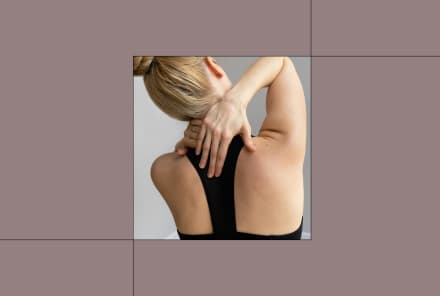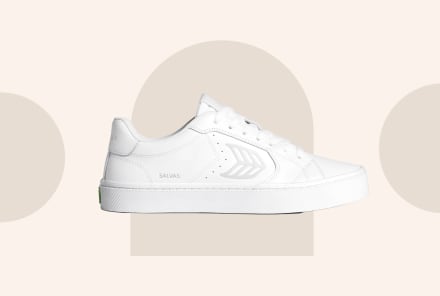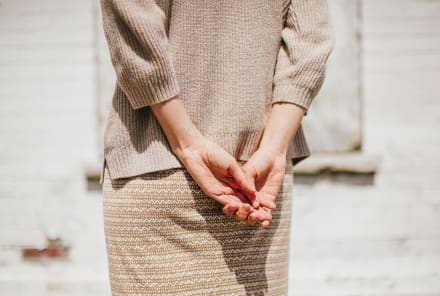Advertisement
Activating This Muscle Could Be The Key To A Stronger Mind-Body Connection

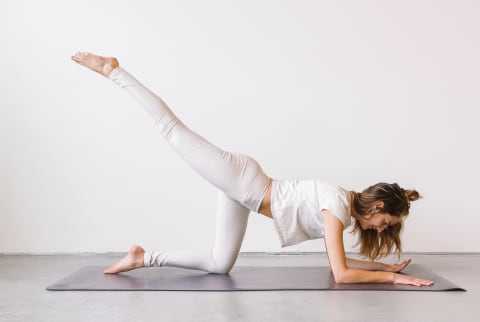
"You need to learn how to connect with your glutes."
That’s what my physical therapist told me after I pulled my hip flexor a few years ago for the third time in the previous two months. Honestly? I was puzzled, to say the least. I had been teaching group fitness for years, and I did glute-strengthening work several times a week. What was I doing wrong?
It turns out, all those times when I was pouring sweat and I thought I was strengthening my butt? My hamstrings, hips, and lower back were actually stepping in to do the work instead. I was feeling the burn—which gave me the illusion of success. It turns out I wasn’t feeling it in the right place.
As I dove deeper into learning about my glutes and the importance of glute strength and how to turn on these hard-to-connect-with muscles, my attention shifted during my workout. I became less focused on how the moves might affect the way I looked, and I was able to tune in a little deeper to how the moves felt in my body. The result? A more connected, meaningful sweat session—not to mention a little more compassion for myself. I created an entire online class devoted to strengthening your glutes right here in the hopes that sharing this knowledge can do the same for you.
Why glute strength isn't just about looking good.
The glutes are one of the most major muscle groups in our bodies, and we need strong glutes to power us during our workouts and to perform simple day-to-day tasks—like picking something up off the floor, climbing stairs, or even just standing tall and upright.
Here’s the thing, though: Because of all the sitting we do, our hip flexors—those ropy muscles at the front of our hips and thighs—get short and tight. As a result, our glute muscles become limited in their range of movement and they weaken. Another harmful effect of sitting is that the glutes can become malnourished. Just like when you sit in a funky position and your leg falls asleep, the same thing is happening to our glutes on a regular basis.
When they don’t have access to regular blood flow and nourishment and this pattern is prolonged, our glutes can even forget how to turn on properly. They become desensitized, and they lose their ability to generate force—which means, even though we try to contract and fire our glute muscles, we can’t. Instead, the muscles in our legs, hips, and lower back take over to compensate for our loss of strength. And this leads to all kinds of health problems—including pelvic floor issues (think sneeze and pee) plus lower-back, knee, and ankle pain.
A 3-move guide to activating your glutes.
So how can we make sure our glute muscles are working efficiently? How can we light them up and train these muscles to work as a team so our body is functionally strong? I’ve got three effective butt-burning moves you can try right now to wake up your glutes and reinforce healthy muscle patterns in your body.
Move 1: Bridge Lifts
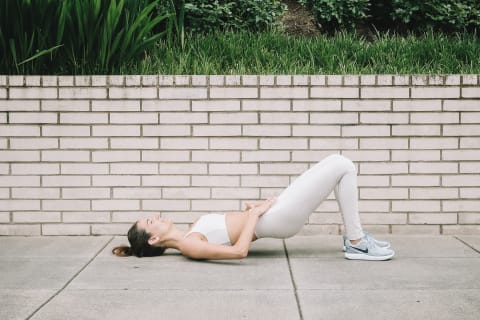
Set it up: Roll all the way down onto your back and bring your feet hip distance apart. Place your hands on your hip bones. Exhale, push your feet into the floor, and engage your glutes. Inhale, lift your hips a few inches.
Take it deeper: Push your feet down into the ground and then, without moving them, energetically drive your feet forward. Hug your low belly in and knit your ribs (so they’re not popping out). Every time you breathe in, imagine that you’re reaching the tops of your thighs and your knees away from you. As you breathe out, focus your attention on turning on your glutes even more. Option to press your palms down into your hip bones to add a little more resistance. Because the glutes are difficult for many of us to connect with, know it might take you a little while to activate these muscles. That’s OK. Just keep focusing. Persistence is key.
Add some movement: Make sure you can feel your glutes activate before you layer on movement.
Start to move your hips up a little bit and then down a little bit. Do 20 reps of small movement—if I were right there with you, I may not even be able to see you moving. When you’re done, try 20 reps of moving a little bit bigger.
Move 2: All Fours
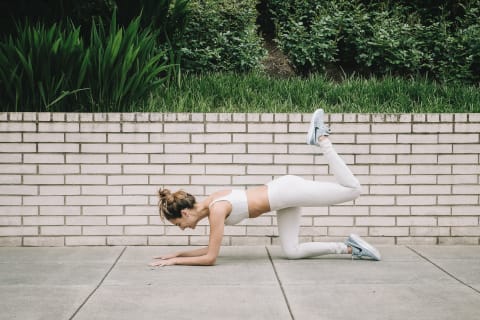
Set it up: Come onto your forearms and knees. Extend your left leg back and bend your knee so your heel is firming tightly in toward your glutes. Lift your low belly so your lower back is supported.
Take it deeper: Without moving, energetically reach the top of your left thigh and knee behind you. It doesn’t matter how high your knee and thigh are lifting. What matters is finding the length. The more you can stretch the front of your thigh, the more your glutes can turn on.
Add some movement: Begin with 20 reps of smaller movement. Then increase your range of motion and try moving bigger. If you lose the connection with your glutes when you move bigger, go back to moving small. You’ll know the range of motion that is best for you because you’ll be able to feel your glutes activating the whole time. Be sure to repeat this on the right side so you stay balanced.
Move 3: Squat
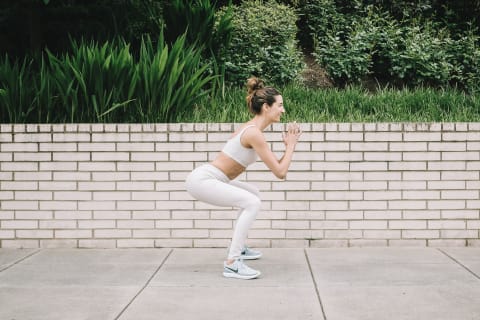
Set it up: Step your feet out wider than your hips. Turn your toes out slightly. Bend your knees and drop your butt down.
Take it deeper: Dig your heels into the ground, and then without moving them, drag them energetically away from each other. Also, press your knees gently out, so they’re in line with your three outer toes. When you do, you’ll start to feel your glutes turning on.
Add some movement: Stand all the way up without pushing your hips forward. Then drop back down. Every time you lower, have the intention of digging your heels into the ground and pressing your knees out. If you’re having trouble feeling the burn in your glutes, go slower. The slower I go—particularly as I lower down into a squat—the more connected I feel.
Curious about how to build strength and find your balance? This pose might help with both.
Watch Next
Enjoy some of our favorite clips from classes
Enjoy some of our favorite clips from classes
What Is Meditation?
Mindfulness/Spirituality | Light Watkins
Box Breathing
Mindfulness/Spirituality | Gwen Dittmar
What Breathwork Can Address
Mindfulness/Spirituality | Gwen Dittmar
The 8 Limbs of Yoga - What is Asana?
Yoga | Caley Alyssa
Two Standing Postures to Open Up Tight Hips
Yoga | Caley Alyssa
How Plants Can Optimize Athletic Performance
Nutrition | Rich Roll
What to Eat Before a Workout
Nutrition | Rich Roll
How Ayurveda Helps Us Navigate Modern Life
Nutrition | Sahara Rose
Messages About Love & Relationships
Love & Relationships | Esther Perel
Love Languages
Love & Relationships | Esther Perel
